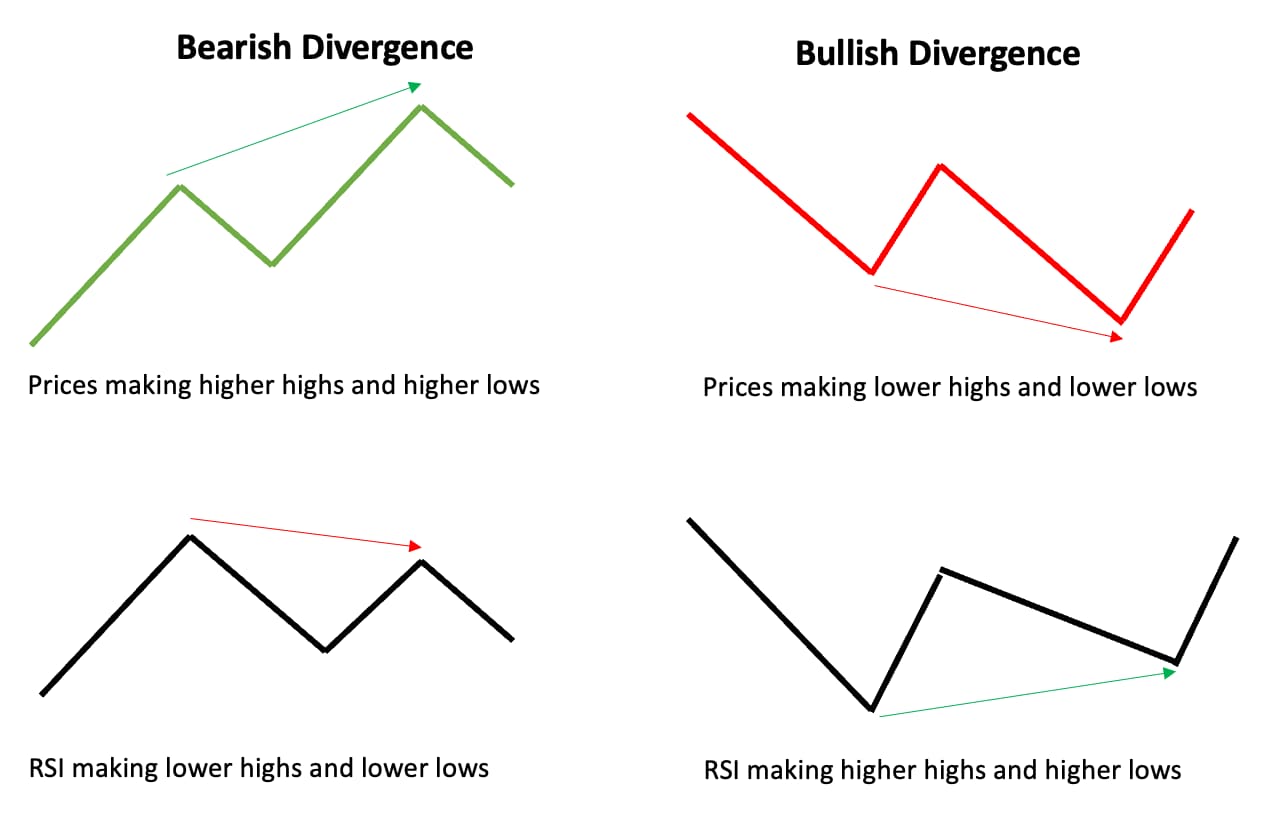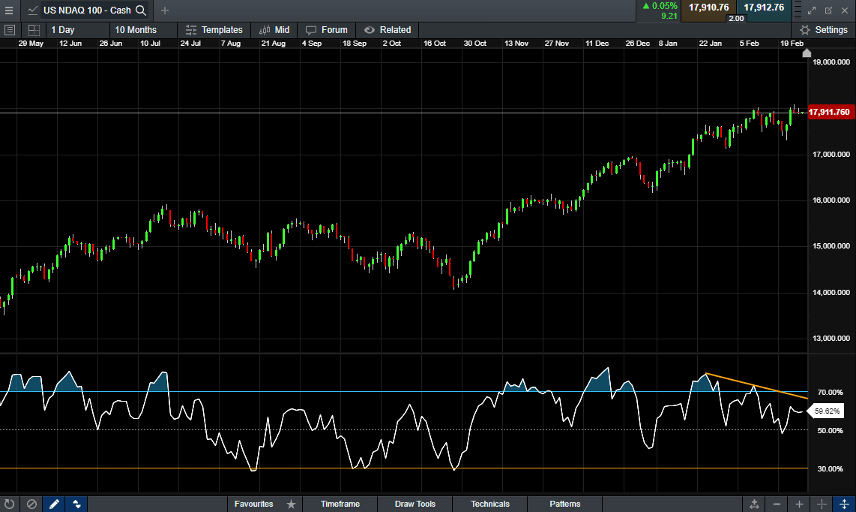Whether it's the temptation to fade a rising market or the desire to be a contrarian in the face of a strong uptrend, retail traders frequently find themselves navigating treacherous waters. However, as exciting as it may seem to go against the grain, succumbing to these impulses can lead to costly mistakes and missed opportunities. At the time of writing, 73% of the position value in our US NDAQ 100 Cash contract, which tracks the Nasdaq, is in short trades.

*Position value for all clients, CMC Markets platform as of 27/2/2024.

Whether the current short selling in the Nasdaq is wise remains to be seen. However, from a risk management perspective, traders should be aware of the possibility that they're shorting too early.
Reasons Behind Premature Short Positions
Traders often fall into the trap of shorting the market too early for several reasons. One common mistake is overreliance on technical indicators. While indicators like the Relative Strength Index (RSI) or Moving Average Convergence Divergence (MACD) can be valuable tools for identifying potential reversals, they can also mislead traders, especially during strong uptrends. Overbought signals may persist for extended periods in a robust uptrend, leading traders to initiate short positions prematurely based on these indicators.
Another contributing factor is the failure to assess the strength of the prevailing trend accurately. Inexperienced traders may misinterpret minor corrections or consolidations within an uptrend as signs of a reversal, leading them to short the market prematurely. Without a solid understanding of trend analysis and the ability to gauge trend strength, traders may enter short positions at inopportune times, missing out on potential profits as the uptrend continues.
Psychological biases also play a significant role in prompting traders to short the market too early. Fear of missing out (FOMO) and the desire to be contrarian can cloud judgment and lead traders to disregard the strength of the prevailing uptrend. Seeing prices rise steadily may induce FOMO, causing traders to rush into short positions out of fear of missing out on potential profits. This contrarian mindset can lead traders to ignore signals indicating the continuation of the uptrend and enter premature short positions.
Furthermore, the tendency of retail traders to hold onto short trades for too long can exacerbate losses if proper risk management isn't employed. Despite initial setbacks, some traders may cling to their short positions, hoping for a reversal that never materialises. This failure to cut losses short can turn manageable declines into significant drawdowns, highlighting the importance of disciplined risk management practices.
Harnessing the Power of Divergences
Divergences, a popular trading signal used to indicate potential trend reversals, can be invaluable tools for traders looking to avoid premature short positions. Unlike traditional technical indicators, which may give false signals during strong uptrends, divergences offer a unique perspective by highlighting discrepancies between price action and momentum.
Bullish divergences occur when the price of an asset forms lower lows while the corresponding indicator forms higher lows. This suggests that despite the downward price movement, buying pressure is building, potentially signalling an upcoming reversal to the upside. By identifying bullish divergences, traders can avoid shorting the market too early and wait to confirm a trend reversal before entering short positions.
Conversely, bearish divergences occur when the price of an asset forms higher highs while the indicator forms lower highs. This indicates that although the price is rising, the underlying momentum is weakening, potentially foreshadowing a reversal to the downside. By recognising bearish divergences, traders can exercise caution and refrain from shorting the market prematurely, waiting for confirmation of a downtrend before entering short positions.

Technical Insights Using Divergences
Let's illustrate this with an example by revisiting the US NDAQ 100 contract. This index has been on the run, and despite the prevailing trend, it has become a magnet for retail traders who want to capitalise on perceived overbought conditions or simply look to be on the “right” side of the trade when sentiment shifts.
The US NDAQ 100 has been in overbought conditions this year and any clean bearish divergences that indicated potential reversals were short-lived, such as the one back in December last year. If we look at the current RSI readings it is indicating a sideways market also known as consolidation with momentum potentially slowing down however there isn’t any confirmed bearish divergences.

In conclusion, avoiding premature short positions requires a combination of technical analysis skills and psychological discipline. By understanding the reasons behind premature shorting and harnessing the power of divergences, traders can make more informed decisions and avoid costly mistakes. However, while it's important to grasp the risks of shorting too early, it's also critical to remember that indicators are merely tools—they can assist, but they're not infallible. As the saying goes, "The trend is your friend, until it bends." Recognising divergences is one way traders can ride the trend confidently and avoid getting caught out too early.
 | Written by Jimmy Pan Jimmy Pan is the Head of Sales at CMC, with over 15 years of experience in the finance industry. His expertise spans a broad range of financial products, including Forex, CFDs and OTC derivatives. With a deep understanding of financial markets, Jimmy plays a crucial role in driving sales growth and strategy at CMC, leveraging his experience to effectively lead the company's sales teams. Jimmy's approach combines analytical skills with a keen market insight, allowing him toidentify and capitalise on emerging opportunities. He is passionate about technical analysis and has delivered market commentary to both retail and high-net-worth clients, in addition to hosting numerous webinars and presentations. |
Disclaimer: CMC Markets is an order execution-only service. The material (whether or not it states any opinions) is for general information purposes only, and does not take into account your personal circumstances or objectives. Nothing in this material is (or should be considered to be) financial, investment or other advice on which reliance should be placed. No opinion given in the material constitutes a recommendation by CMC Markets or the author that any particular investment, security, transaction or investment strategy is suitable for any specific person. The material has not been prepared in accordance with legal requirements designed to promote the independence of investment research. Although we are not specifically prevented from dealing before providing this material, we do not seek to take advantage of the material prior to its dissemination.





